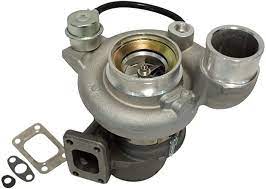公司地址:遼寧省大連市開發(fā)區(qū)遼河中二路一號山河智谷數(shù)字經(jīng)濟電商產業(yè)園5棟5號
網(wǎng)站制作:繼峰科技


The primary advantage of using a turbocharger with Cummins engines is increased power output. By using a turbo charger, the engine can draw in more air and fuel, increasing the amount of power it can produce. This increase in power can be used to do more work with the same engine, or to reduce the size of the engine needed for a particular job. However, adding a turbo to a non-turbo engine is not a simple task, as several critical engine components will need to be changed to handle the increase in horsepower. For example the engine would need to be overhauled with completely new components.
Determine the type of Cummins engine you have.
The first step in selecting the right turbocharger for your Cummins engine is to determine the type of Cummins engine you have. Cummins manufactures a variety of engines, including diesel and gasoline engines, and they come in different sizes and power ratings. Depending on the type of engine, you may need a different turbocharger.
Wastegate and Boost Leaks
Wastegate leaks and boost leaks are the most common issues with turbochargers. These leaks can cause a decrease in performance, an increase in exhaust temperatures, and a decrease in fuel economy. To troubleshoot these issues, check all clamping surfaces and hoses connecting the turbocharger to the engine for any signs of leakage or wear.
Overheating
Overheating can be caused by a lack of airflow through the turbocharger or an issue with the turbocharger’s wastegate actuator. If the turbocharger is not receiving enough air, it will be unable to cool its hot exhaust gas as it exits the turbocharger and will overheat. The wastegate actuator can also cause an overheat issue if it fails to close properly, causing a surge of exhaust gas that flows back into the compressor housing through the turbine and intercooler before exiting at full speed, resulting in an engine fire or damage to nearby components.